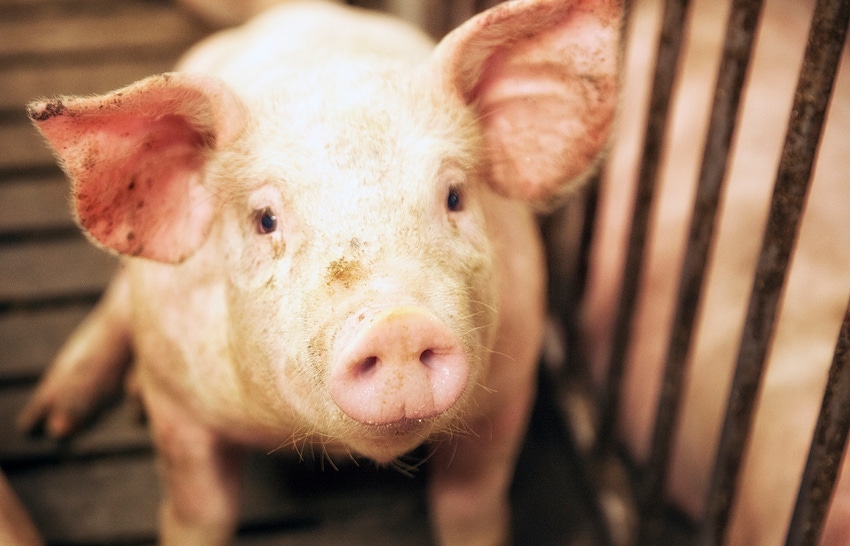What does livestock-associated MRSA mean for the neighborhood?
Overall impact of LA-MRSA relative to human variants remains small in most countries. There is no evidence that residence in rural areas increases overall MRSA risk.
December 11, 2018

By Peter Davies, University of Minnesota College of Veterinary Medicine Veterinary Population Medicine Professor
Most people are likely familiar with MRSA (methicillin resistant Staphylococcus aureus), a flagship “superbug” that is a major concern to human medicine. And just about everybody in the pig industry has heard that certain variants of MRSA are very common in some livestock populations (including pigs), and these are referred to as “livestock-associated” MRSA. Before 2004, MRSA was a “human thing” — animals were thought to play no role in MRSA epidemiology.
That changed after a novel variant of MRSA (labelled ST398 using a DNA typing method) was first found in pigs in the Netherlands. Subsequently, ST398 MRSA and several other types (e.g., ST9 in Asia, ST5 in North America) were reported in pigs in numerous countries, and often in their caretakers as well. The discovery that pigs may be a large MRSA reservoir created some justifiable panic and confusion, raising questions about the implications for human health, particularly for industry workers (e.g., farmers, veterinarians, processing plant workers), pork consumers and, last but not least, people living in the neighborhood of pig farms.
The global experience during the intervening 14 years has advanced our understanding about the human health risks of LA-MRSA in pigs. Firstly, not all MRSA are created equal, and animal-adapted variants of S. aureus (both MRSA and methicillin sensitive) generally lack most of the key “virulence factors” that enable MRSA to cause clinical infections in people. Although workers on MRSA-positive farms often harbor LA-MRSA in their nose, significant clinical infections in healthy workers have been rare.
To be clear, human clinical infections with LA-MRSA do occur, but most cases tend to be of relatively mild disease (such as skin infections), with more severe infections typically limited to elderly and medically compromised patients.
Remembering that about 2% of healthy U.S. citizens carry human adapted variants of MRSA, the relative clinical importance of LA-MRSA appears to be minimal in most countries. Globally since 2004, there have been around 10 fatal cases of LA-MRSA infections reported, compared with about 50 fatal cases per day (18,650 per year in 2005) in the United States alone. A 2016 study of Iowa hospitals found probable livestock variants in only 0.24% of MRSA cases, and 1% of S. aureus infections. In North Carolina, another leading swine-producing state, there were no LA-MRSA variants among more than 1,200 MRSA isolated from human bloodstream infections between 1995 and 2015 (Dr. Vance Fowler, Duke University, personal communication).
Although MRSA can be isolated from meat products, there is little evidence to suggest cause for concern about foodborne transmission. In contrast, conclusions of studies looking at the neighborhood risk of exposure to LA-MRSA from pig farms are conflicting, and this issue is often raised in objections to permitting of hog farms in the United States. However, not all research studies warrant the same weight for consideration. In general, the studies that suggest elevated neighborhood risk have had more methodological shortcomings than those that indicate risk to be minimal. Rather than dissect the less rigorous studies, it is more informative to focus on the findings of studies that have measured individual exposure directly (e.g., direct comparison of pig workers versus neighbors), measured the distance from pig barns to residences directly (versus inferring it from regional density); and used molecular typing to confirm the presence of LA-MRSA in the study populations.
Across three early studies in Europe, LA-MRSA prevalence (nasal carriage) was greater than 180 times higher in 352 pig industry workers (44%) than in 2,094 rural residents without farm exposure (0.24%). A similar study in Holland in 2017 showed similar prevalence of nasal colonization (0.56%) in people without livestock contact, but also found the positive people on average lived closer to farms (of any type). Importantly, the authors noted that routes of transmission underlying this were not known. A very detailed study of cases (infections) of MRSA infection in Denmark showed that overall MRSA risk did not differ between pig-dense regions versus other regions. However, the likelihood that a MRSA infection would be a LA-MRSA type was higher in the pig-dense regions, confirming some “spillover” from the industry to the community.
Notably, a follow-up study published in 2018 found that, within pig-dense areas, the patients with LA-MRSA infections did not live closer to pig farms than population controls. The authors conclude that direct environmental spread from neighboring pig farms was unlikely and suggested that community spread through other mechanisms may occur. They indicate that contact with people working with livestock, who can harbor LA-MRSA at high prevalence, might be the predominant mechanism for the community spillover of LA-MRSA that they observed in pig-dense regions.
In summary, the overall impact of LA-MRSA relative to human variants remains very small in most countries including the United States. There is no evidence that residence in rural areas increases overall MRSA risk. A recent Iowa study reported prevalences of S. aureus (47%) and MRSA (5.8%) carriage in one urban county versus 35% and 1.6%, respectively, in a rural county, and did not report LA-MRSA in either group. Exposure to LA-MRSA in pig-dense communities is very common in livestock workers on affected farms (and is elevated in their family members), but is orders of magnitude lower in rural residents without animal contact. However, it is higher than in people living in regions without pig production. Research to date provides little evidence that environmental transmission attributable to residing in proximity to farms is a major route for neighborhood exposure.
You May Also Like



